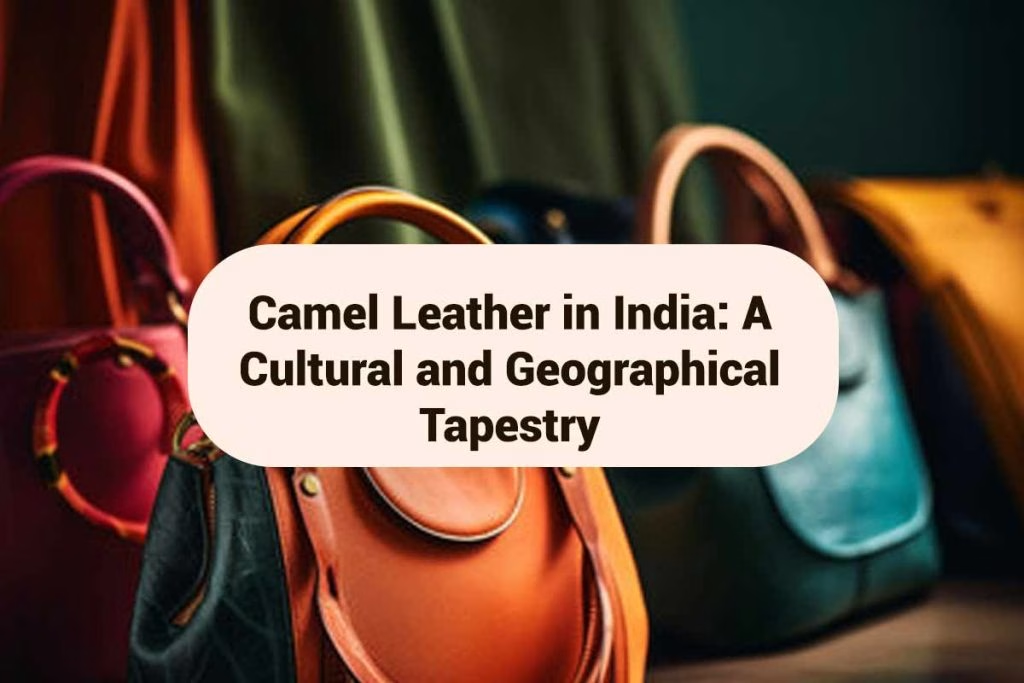India, with its rich tapestry of cultures, traditions, and diverse landscapes, has been a hub of craftsmanship for centuries. One of the lesser-known but deeply ingrained aspects of Indian heritage is the use of camel leather in crafting various products. Camel leather, owing to its unique qualities and the cultural significance of the camel in India, has become an integral part of the country’s artisanal heritage.
Geographical Context:
The use of camel leather is closely tied to the geography of India, particularly the arid and semi-arid regions where camels thrive. States such as Rajasthan, Gujarat, and parts of Haryana have a long history of camel husbandry, making them natural hubs for camel leather production. The harsh desert climate necessitates durable and resilient materials, making camel leather an ideal choice for the local artisans.
Camel Leather Production:
Camel leather, derived from the hides of camels, is known for its toughness, flexibility, and unique grain pattern. The leather undergoes a meticulous tanning process, which often combines traditional methods with modern techniques to ensure both durability and aesthetic appeal. The tanning process involves treating the raw hides with natural extracts, such as tannins from plant sources, to make them resistant to decay and suitable for various applications.
Products Made from Camel Leather:
The versatility of camel leather is showcased through an array of products crafted by skilled artisans across India. Some of the most notable items include:
- Footwear:
- Camel leather is commonly used in crafting traditional footwear such as juttis and mojaris. The durability of the leather makes these shoes well-suited for the rough terrain of desert regions.
- Bags and Accessories:
- Handbags, backpacks, wallets, and belts made from camel leather are not only stylish but also robust. The distinct texture and earthy tones of camel leather add a unique charm to these accessories.
- Clothing:
- Traditional outfits like jackets, vests, and pants are often fashioned from camel leather, providing protection from the elements while reflecting the cultural identity of the wearer.
- Home Décor Items:
- Camel leather is also utilized in crafting home décor items such as cushions, lampshades, and wall hangings. These items not only showcase the craftsmanship but also bring a touch of rustic elegance to living spaces.
Cultural Significance:
The cultural significance of camel leather in India is deeply rooted in the historical importance of camels in desert communities. Camels have been revered as indispensable companions in arid regions, serving as reliable transport and playing a crucial role in the daily lives of the people. The use of camel leather in traditional crafts is a tribute to the enduring bond between humans and camels.
Furthermore, camel leather products often feature intricate hand-embroidery, beadwork, and other traditional embellishments, reflecting the artistic heritage of the communities involved in their production. These designs often tell stories of the local culture, folklore, and traditions.
Conclusion:
Camel leather, with its strong ties to the culture and geography of India, stands as a testament to the resilience and resourcefulness of the people in arid regions. The craftsmanship associated with camel leather not only produces practical and aesthetically pleasing items but also preserves and celebrates a cultural legacy that has withstood the test of time. As consumers increasingly value sustainable and unique products, camel leather from India presents an opportunity to connect with a rich cultural heritage while supporting skilled artisans and the preservation of traditional crafts.

